In Part 1 of this blog, we introduced you to Tynker and discussed the application of both the SAMR Model and the Triple E Framework to help you integrate Tynker into your instruction. Today’s post offers detailed instructions about how to use this tool and also shares classroom use ideas by subject.
Tynker:
To begin using Tynker, you will need to create your free account. Click Get Started for Free.
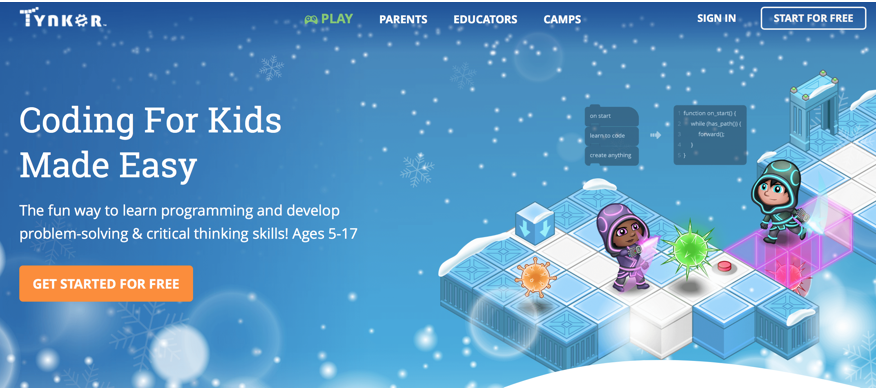
You will be prompted to choose to create a Student, Teacher, or Parent account.
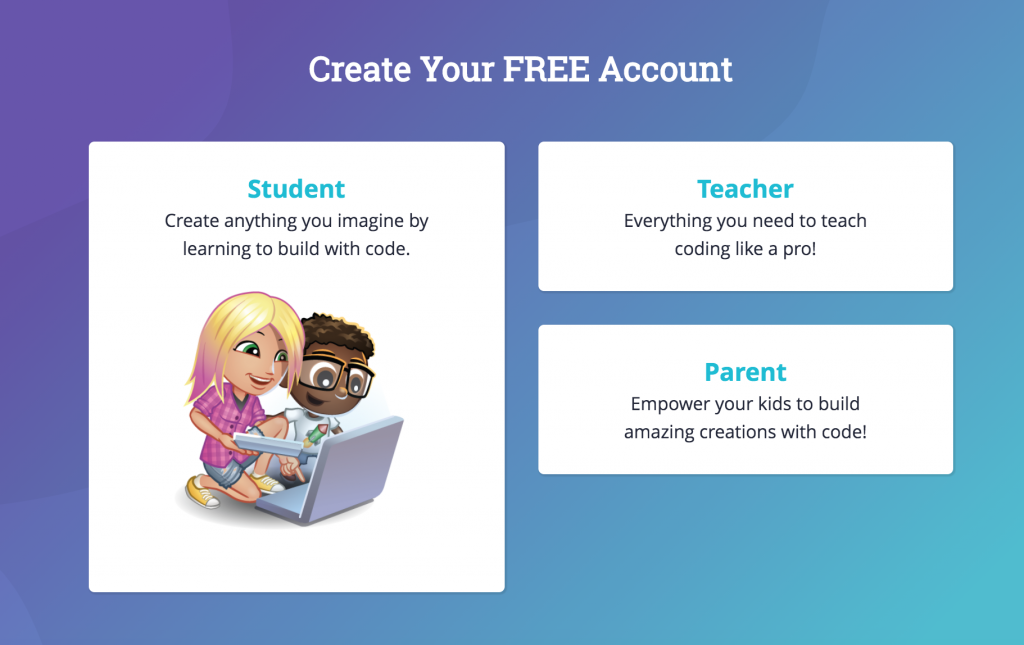
Registration for the Teacher account requires an email and a password. The free account includes the three free coding courses (focused for elementary and middle school), unlimited student accounts, free professional development, more than 35 activities to use during Hour of Code (or anytime) for grades K–12, and seasonal projects.
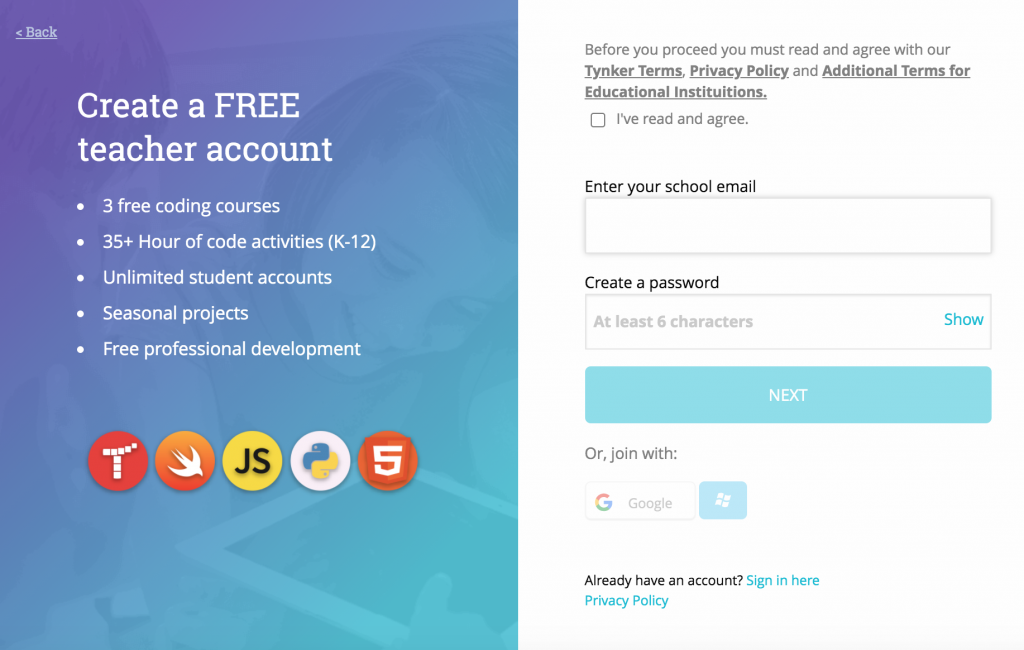
This is a view of the teacher dashboard where you can view your classes, projects, and courses. Across the top, you can click the tabs to view lessons, your gradebook, projects, students, awards, and more…all included with the FREE membership. Easily invite your students to join your Tynker class by sharing the class code (for students who already have an existing Tynker account) or you can add your students by creating your own usernames and log-ins. You also have the option to allow Tynker to create automatically-generated usernames and passwords. All of these options make it easy to protect your students’ privacy while on Tynker, as no real names are necessary.

There are three free full courses. Barbie You Can Be Anything is designed for grades K–4, Programming 100 is designed for grades 3–5, and Programming 300 is designed for grades 6–8.
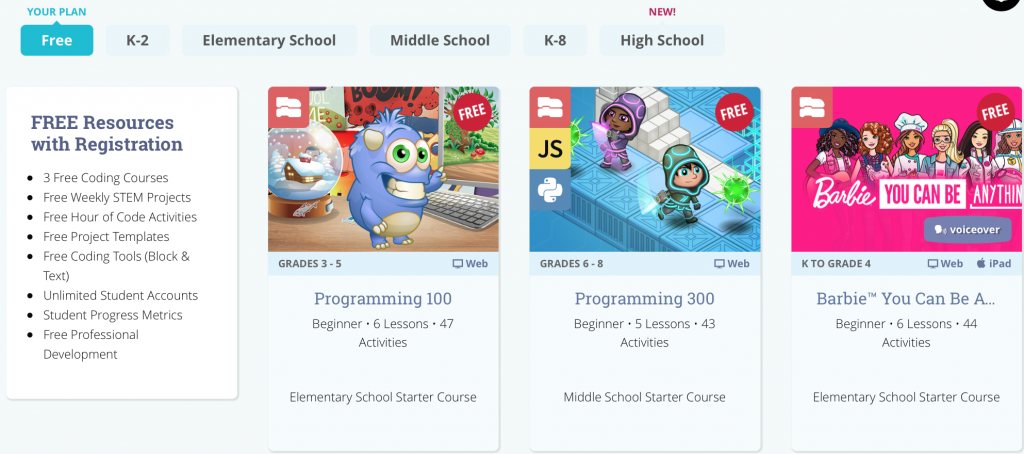
Here is a sample of the lessons that you’ll find in the middle school coding module. The interactive offers JavaScript, Python, and other coding languages. Click to view individual lesson plans or to assign that particular lesson to your students. There are also tabs to view the overview of the middle school coding module (Programming 300), answer keys, and class presentations.
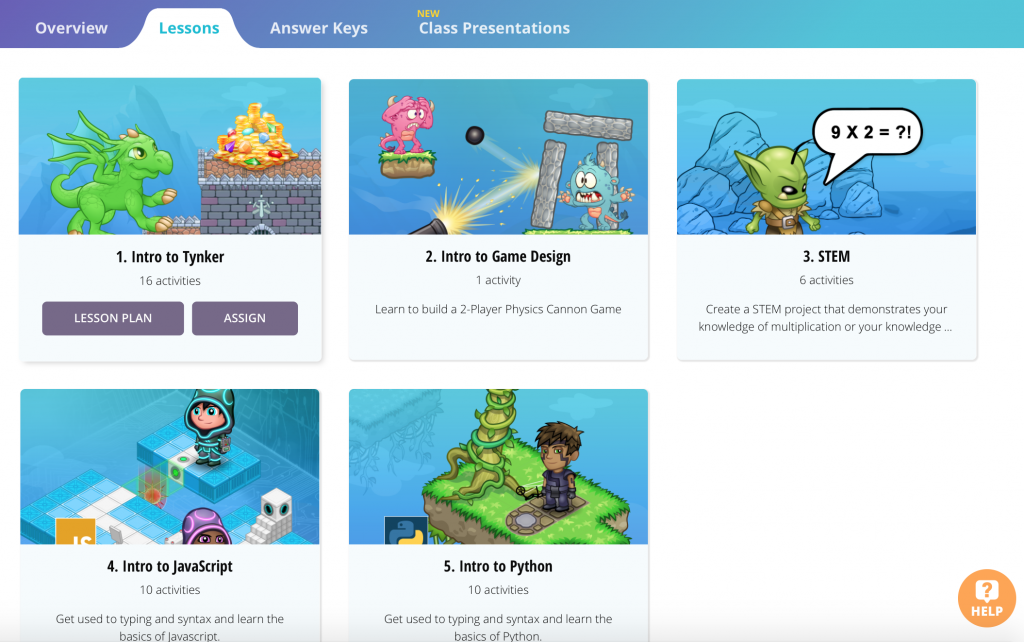
The site’s Class Presentations provide teachers a way to scaffold instruction and offer a preview of each lesson by sharing the presentation slides related to that lesson/activity. These can be shared with students for viewing as part of a blended or remote learning lesson.
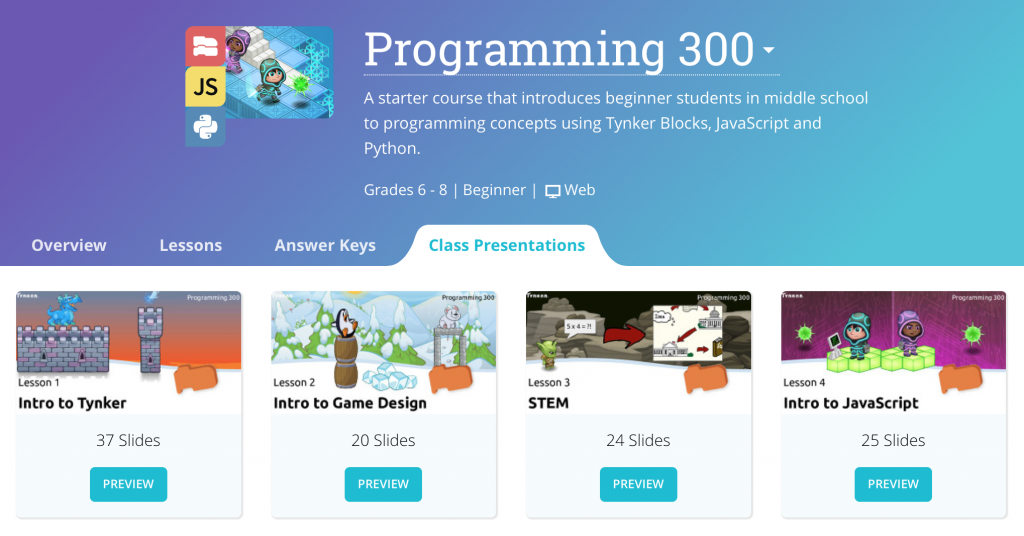
In the Resources tab on the left sidebar, educators can find timely blog posts and articles related to coding and using Tynker. This may be a good place to begin if you aren’t familiar with the tool.
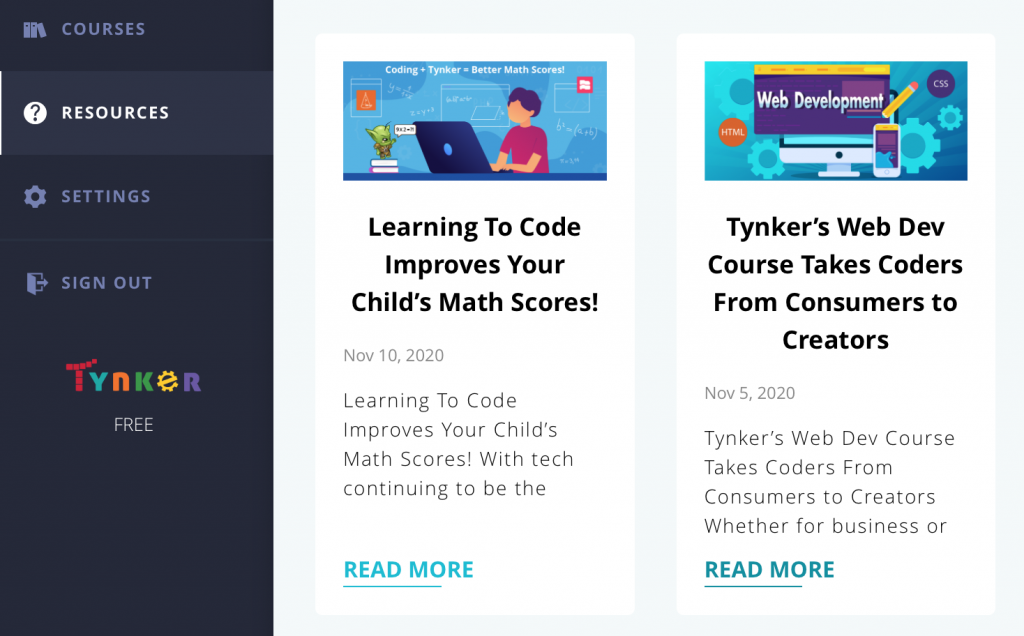
At the top of the Resources area, you will find links to the Help Center, Forum, Hour of Code, and Professional Development pages.

The Hour of Code link offers numerous resources and is used by more than 200 million participants! Here you can easily add your students to any/all Hour of Code activities. You’ll see some sample activities in the next image.

If you click the link for Hour of Code, you will find a plethora of free resources to use during the event in your classroom. They offer resources for all grades, and each activity includes the grade level, time required, and a brief description. Pay special attention to the teacher notes with each activity. Many of the lessons offer teacher guides, solutions, and some are even available in multiple languages!

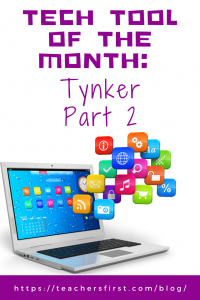
Classroom Use Ideas:
Tynker can be used in several subject areas and to build many different skills. Below are some classroom ideas using Tynker to try with your students.
Students can use Tynker to…
- Learn and practice logical and sequential thinking.
- Break down larger problems into more digestible chunks.
- Learn drag-and-drop block coding.
- Engage in basic game design.
- Gain knowledge about Python.
- Experience and practice with JavaScript.
- Develop deeper perseverance.
- Engage in the engineering design process.
Many of the activities in the Hour of Code section can be connected to various subject areas:
Social Studies:
- Puppy Adventure (use geography and coding to help the puppy get home).
- Bill of Rights (program a quiz related to the document).
Science:
- Space Quest.
- NASA Moon 2 Mars.
- Affordable and Clean Energy.
- Responsible Consumption and Production (recycling using code).
- Cooking Game.
- Physics Cannon Game.
- Undersea Arcade.
- Underwater Pyramid.
- Solar System.
Math:
- Counter Hack (use mazes to solve code).
- Analog Clock.
- Pattern Maker (create geometric shapes).
- Multiplication Escape.
Language Arts:
- Barbie You Can Be Anything (read and listen to stories about careers).
- Tell a Joke (creative writing).
- Homophones.
Music/Art/Dance:
- Draw a Landscape.
- Superhero Masks (design your own).
- Peep: Dance with Friends.
- Monster High: Music Video.
- Spin Draw.
Additional Video Tutorials and Articles:
- TeachersFirst Review of Tynker
- Videos: Tynker YouTube Channel
- Video: Tynker – STEM Kids App Review
- Tynker: In the Classroom Blog
Have you used Tynker in your classroom or for professional learning? Share your activities in the comments below!

